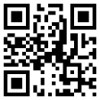machine learning
Statistical unicodification of African languages
Submitted by Guy on Tue, 2011-09-20 10:36- Login to post comments
- Google Scholar
Automatic Diacritic Restoration for African Languages
Submitted by Guy on Tue, 2007-10-23 12:16This is a demonstration system for a diacritic restoration method that is able to automatically restore diacritics on the basis of local graphemic context. It is based on the machine learning method of Memory-Based learning. We have applied the method to the African languages of Cilubà, Gĩkũyũ, Kĩkamba, Maa, Sesotho sa Leboa, Tshivenḓa and Yoruba.
You can find more information on this system in this paper
Authors:
Guy De Pauw: CNTS - Language Technology Group, University of Antwerp, Antwerp, Belgium, guy [dot] depauw [at] ua [dot] ac [dot] beGilles-Maurice de Schryver: African Languages and Cultures, Ghent University, Ghent, Belgium, gillesmaurice [dot] deschryver [at] ugent [dot] be
Peter Waiganjo Wagacha: School of Computing and Informatics, University of Nairobi, Nairobi, Kenya, waiganjo [at] uonbi [dot] ac [dot] ke
- Login to post comments
Northern Sotho Part-of-Speech Tagger (V2) - Demo
Submitted by Guy on Thu, 2007-10-11 13:05This demo showcases a part-of-speech tagger for Northern Sotho. It retrieves the morpho-syntactic categories for words in a sentence. It uses MBT, the memory-based tagger trained on a relatively small annotated corpus.
Version1: Ocotober 10 2007 (20k tokens training set)
Version2: December 8 2007 (35k tokens training set)
Type in the text you want to tag (2,500 character limit)
Example: Motho ge a sa tseba o swanetše go dumela seo gore bao ba tsebago ba mmotše.
Authors:
Guy De Pauw: CNTS - Language Technology Group, University of Antwerp, Antwerp, Belgium, guy [dot] depauw [at] ua [dot] ac [dot] be
Gilles-Maurice de Schryver: African Languages and Cultures, Ghent University, Ghent, Belgium, gillesmaurice [dot] deschryver [at] ugent [dot] be
Paper
- Login to post comments
CNTS - Language Technology Group
Submitted by Guy on Tue, 2006-12-12 15:41CNTS is a research center of the Department of Linguistics of the University of Antwerp (UA) in Antwerp, Belgium, engaged in research in computational linguistics and psycholinguistics. The CNTS - Language Technology Group has a strong tradition in the application of machine learning techniques for natural language processing. Recently, CNTS has also started investigating the applicability of unsupervised learning methods and knowledge transfer techniques for the annotation and linguistic description of African languages, particularly Kiswahili and the local languages of Kenya.
- Login to post comments
Kiswahili Part-of-Speech Tagger - Demo
Submitted by Guy on Tue, 2006-12-12 14:58This demo showcases a broad coverage part-of-speech tagger for Kiswahili. It retrieves the morpho-syntactic categories for words in a sentence. This system uses the Memory-Based Tagger trained on the Helsinki Corpus of Swahili.
Type in the text you want to tag
Example: Hapo ni kwa nini Sahara halina maji na kwa nini simba na shungi.
Authors:
Guy De Pauw: CNTS - Language Technology Group, University of Antwerp, Antwerp, Belgium, guy [dot] depauw [at] ua [dot] ac [dot] be
Gilles-Maurice de Schryver: African Languages and Cultures, Ghent University, Ghent, Belgium, gillesmaurice [dot] deschryver [at] ugent [dot] be
Peter Waiganjo Wagacha: School of Computing and Informatics, University of Nairobi, Nairobi, Kenya, waiganjo [at] uonbi [dot] ac [dot] ke
Paper
Gĩkũyũ Diacritic Placement - Demo
Submitted by Guy on Tue, 2006-12-12 14:52The orthography of Gĩkũyũ includes a number of accented characters to represent the entire vowel system (namely ĩ and ũ). Not available on standard computer keyboards, these characters are usually typed as the nearest available characters (i and u).


